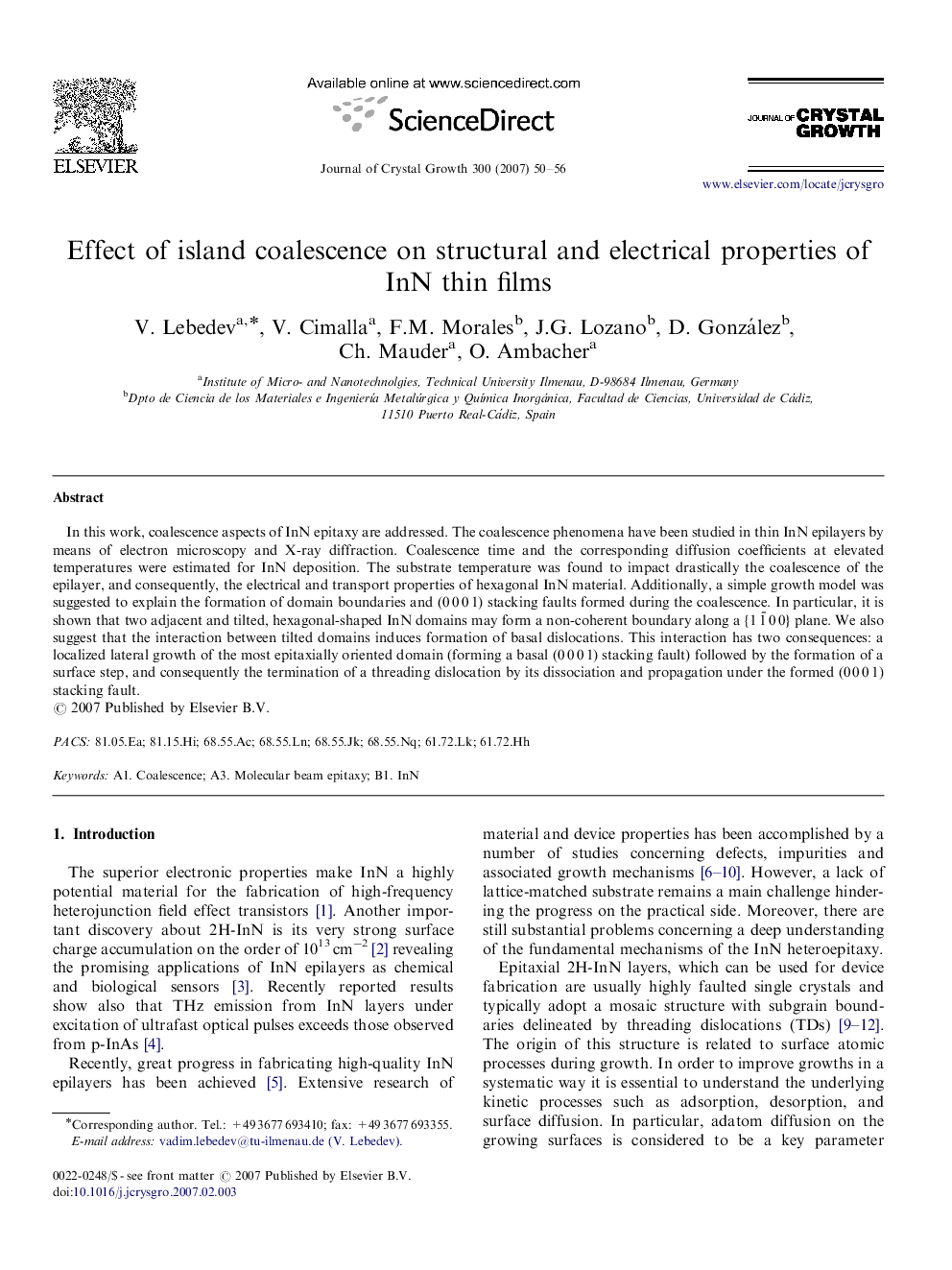| Article ID | Journal | Published Year | Pages | File Type |
|---|---|---|---|---|
| 1795994 | Journal of Crystal Growth | 2007 | 7 Pages |
Abstract
In this work, coalescence aspects of InN epitaxy are addressed. The coalescence phenomena have been studied in thin InN epilayers by means of electron microscopy and X-ray diffraction. Coalescence time and the corresponding diffusion coefficients at elevated temperatures were estimated for InN deposition. The substrate temperature was found to impact drastically the coalescence of the epilayer, and consequently, the electrical and transport properties of hexagonal InN material. Additionally, a simple growth model was suggested to explain the formation of domain boundaries and (0 0 0 1) stacking faults formed during the coalescence. In particular, it is shown that two adjacent and tilted, hexagonal-shaped InN domains may form a non-coherent boundary along a {11¯00} plane. We also suggest that the interaction between tilted domains induces formation of basal dislocations. This interaction has two consequences: a localized lateral growth of the most epitaxially oriented domain (forming a basal (0 0 0 1) stacking fault) followed by the formation of a surface step, and consequently the termination of a threading dislocation by its dissociation and propagation under the formed (0 0 0 1) stacking fault.
Keywords
Related Topics
Physical Sciences and Engineering
Physics and Astronomy
Condensed Matter Physics
Authors
V. Lebedev, V. Cimalla, F.M. Morales, J.G. Lozano, D. González, Ch. Mauder, O. Ambacher,
